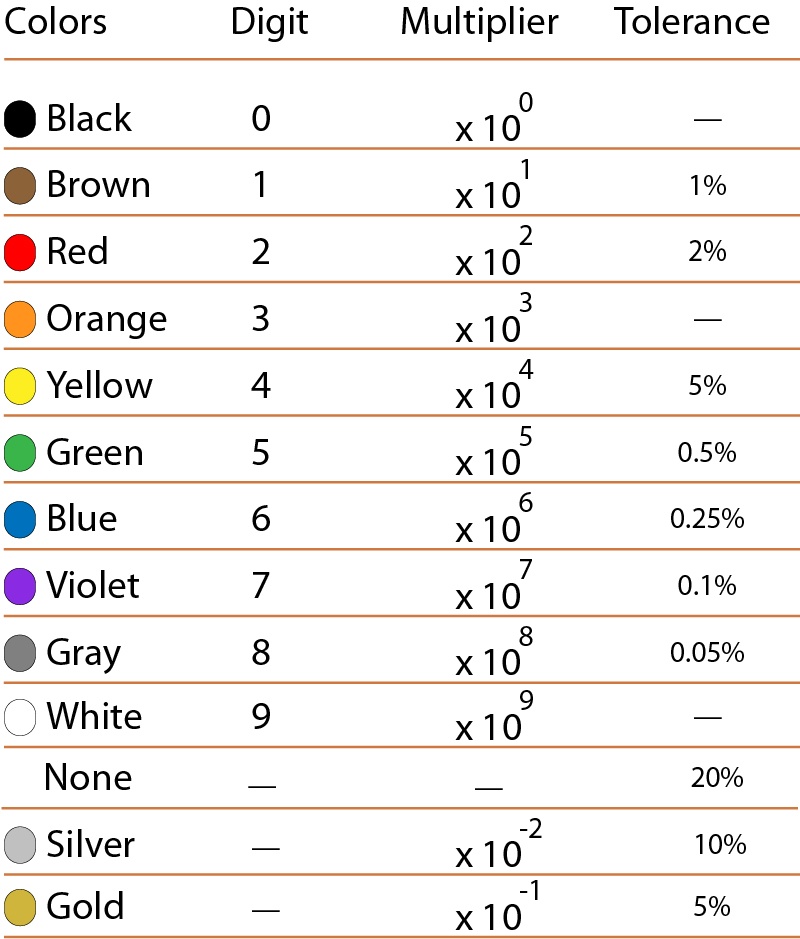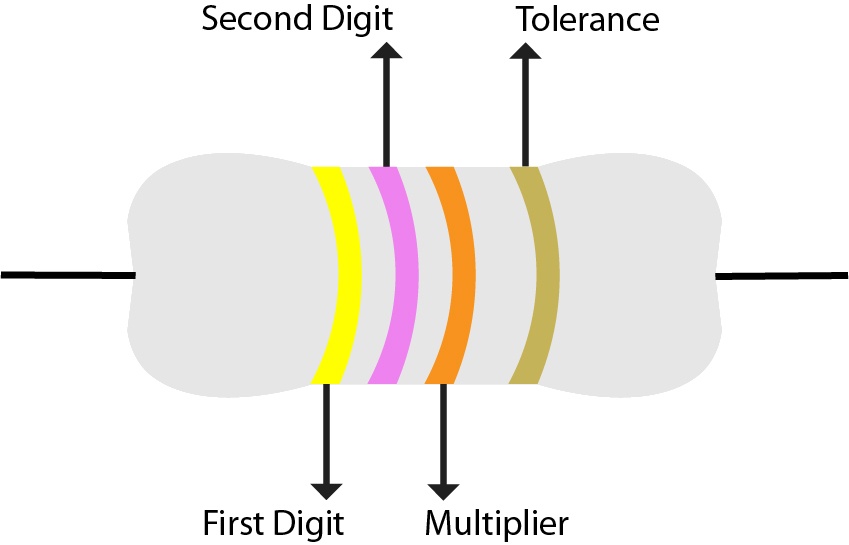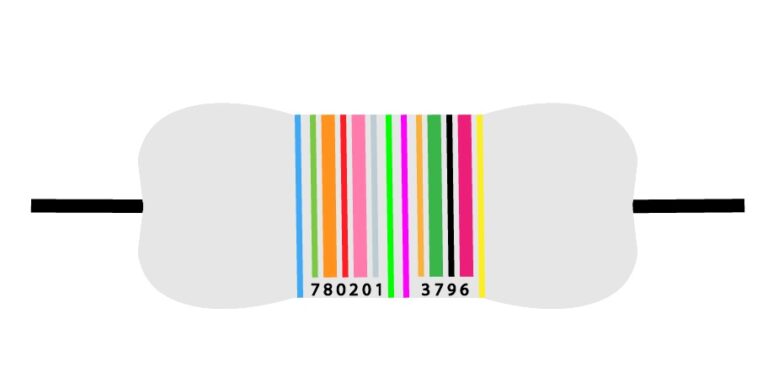Resistor color coding represents the rating of components by marking different colors over the components. The coding was introduced in the 1920s and then standardized in 1952 by IEC. Use the Resistor Color Codes Calculator online for calculating the 4-band color.
Why Use Resistor Color Coding?
Originally color coding was meant to be used for fixed resistors, capacitors, inductors, and diodes. Because printing color bands were not easy and cheap on small components at that time. Advancement in printing technology makes it easier to print practically anything over these tiny electronic components but the convention remains.
Resistor Color Codes Calculator
- Top 5 Essential Electrical Wiring Rules to Follow for Your Home
- Elevate Your Boating Experience with a Marine SoundBar
Resistor Color Code Chart
Each color has a value starting from 0 to 9. The coding has also room for tolerance in the rating. Tolerance is the percentage of error in resistance value. The resistor color code chart is given below.

Resistor Value:
Colors are banded around the component most commonly resistors. There is typically 4 color circle around the resistor. Starting from left, the first, two-color represent the first and second digits. The third one shows the multiplier using scientific notation ($\times 10^{\alpha }$). Finally, the fourth color band shows the tolerance in percentage.

Observing the diagram, you may notice the spacing between the last two color bands is different which is the right side of the resistor.
Resistors manufactured for defense purposes may have the fifth band which indicates the failure rate. In the case of 6-band resistors, the 6th band shows the temperature coefficient in ppm/K.
Calculate Resistor Color Code Manually
What is the resistance of the following color-coded resistor?

The colors are Yellow, Violet, Orange, and Gold. The first two show the two digits
Yellow = 4
Violet = 7
The next color is Orange showing the multiplier i.e.
Orange = $\times 10^{3}$
The fourth color is Gold which is the tolerance i.e.
Gold = ±5%
So, the final value of the resistor is
$R=47\times 10^{3} \pm 5%$
$R=47k\Omega\pm 5%\times 47kOmega$
$R> 44.65k\Omega \quad and \quad R<49.35k\Omega$
The final value of the resistor is in the range from 44.65k to 49.35kΩ.
- Differences Between Fixed Wiring Testing and PAT Testing
- Sustainability in Flex: Green Practices in Flexible PCB Manufacturing
Downsides of Resistor Color Code
Resistor color-coding system has some drawbacks like in the case of colorblind people. And recognition problems caused by overheating and dirt accumulation or differentiation between colors i.e. red, orange, and brown.
Short Answer Questions:
What is the 330-ohm resistor color code 4-band and 5-band?
For 4-band the color code for a 330-ohm resistor is orange, orange, and brown. For a 5-band 330-ohm resistor, the color code is typically orange, orange, brown, red, and brown.
what is a 100-ohm resistor color code?
The color code for a 100-ohm resistor is brown, black, and brown.
What is the 1k resistor color code?
The color code for a 1k-ohm resistor is brown, black, and red.
What is the 2k resistor color code?
The color code for a 2k ohm resistor is red, black, and red.
What is the 100k resistor color code?
The color code for a 100k-ohm resistor is brown, black, and yellow.
What is the 200k resistor color code?
The color code for a 200k-ohm resistor is red, black, and yellow.
